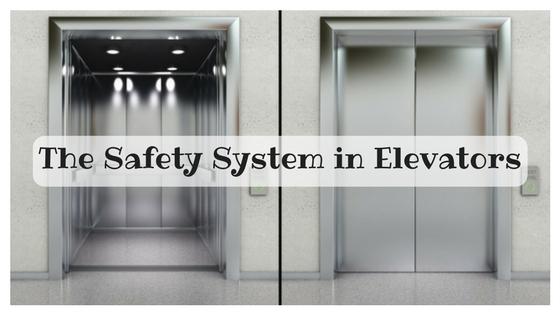Elevators Safety System Market Analysis: Enhancing Reliability in Vertical Transportation Systems
The elevators safety system market is rapidly expanding, driven by global urbanization, stringent safety regulations, and the technological evolution of vertical transportation. Elevators are no longer simple mechanical systems—they are complex, smart mobility solutions operating within high-rise structures, commercial buildings, and critical infrastructure. As elevator usage increases, so does the demand for comprehensive safety solutions to prevent accidents, reduce downtime, and ensure passenger trust.

This article offers a deep analysis of the elevator safety system market, highlighting its current dynamics, key drivers, competitive landscape, and growth opportunities shaping its future.
Understanding the Role of Safety in Elevator Systems
Modern elevator systems are essential components of building infrastructure, enabling efficient vertical mobility in urban settings. But their functionality is closely tied to safety. From emergency brakes and door interlocks to overspeed governors and communication systems, elevator safety components are designed to protect passengers during normal operations and emergencies.
These safety systems are especially critical in skyscrapers, hospitals, airports, and metro stations—locations where elevator failures can cause disruptions or pose serious risks. As a result, both government regulations and consumer expectations have elevated the importance of investing in robust elevator safety mechanisms.
Market Drivers: What's Fueling Growth?
Several macro and microeconomic factors are driving the demand for advanced elevator safety systems:
1. Urban Expansion and High-Rise Construction
Global urbanization is pushing cities to grow vertically. As residential and commercial high-rises increase, so does the reliance on elevators—and with that, the need for reliable safety systems. Countries like India, China, and the UAE are leading the adoption of smart and safe elevators in high-density buildings.
2. Government Safety Regulations
Regulatory frameworks such as EN 81 in Europe and ASME A17.1 in North America have made safety compliance mandatory. These regulations encourage the integration of intelligent safety technologies like seismic detectors, automatic rescue systems, and fail-safe door locking mechanisms. Non-compliance can lead to fines and legal risks, driving market-wide adherence.
3. Technological Advancements
The incorporation of IoT, AI, and predictive maintenance into elevator systems has transformed safety standards. Modern elevators now feature self-diagnosing capabilities, emergency auto-evacuation functions, and real-time performance alerts. These technologies allow for proactive interventions before malfunctions occur.
4. Retrofit and Modernization Demand
Aging infrastructure in North America and Europe offers immense potential for modernization. Many older buildings are retrofitting their elevators with modern safety mechanisms, enhancing user safety while extending the life of existing systems.
Market Segmentation and Regional Insights
By Component Type:
-
Control Systems: Handle fault detection and safe operation.
-
Braking Systems: Ensure stopping accuracy and overspeed protection.
-
Safety Switches and Sensors: Trigger alerts during malfunctions or improper use.
-
Buffers and Governors: Minimize physical impact during emergencies.
-
Emergency Communication Systems: Facilitate two-way contact during breakdowns.
By Application:
-
Residential Buildings: Increasing demand for safety due to vertical housing trends.
-
Commercial Spaces: Offices, malls, and hotels require high-capacity, fault-resistant systems.
-
Industrial Facilities: Use elevators for both personnel and heavy loads—safety is non-negotiable.
-
Healthcare and Transit Hubs: Require continuous, fail-proof elevator service for critical operations.
By Region:
-
Asia-Pacific: Leading growth due to rapid urbanization and new building projects.
-
North America & Europe: Focus on retrofitting and compliance upgrades.
-
Middle East & Africa: Rising investments in smart cities and tourism-driven infrastructure.
Competitive Landscape and Innovation
The elevators safety system market is populated by both multinational elevator manufacturers and specialized safety tech companies. Major players include:
-
Otis Elevator Company
-
KONE Corporation
-
Schindler Group
-
Thyssenkrupp AG
-
Mitsubishi Electric Corporation
These firms invest heavily in R&D to develop intelligent safety systems, such as AI-based threat detection, cloud-connected diagnostics, and zero-touch control panels. The market is witnessing collaborations between elevator OEMs and software developers to co-create integrated solutions that optimize safety, energy use, and user experience.
Challenges and Restraints
Despite positive growth, the market faces several challenges:
-
High Cost of Advanced Systems: Cutting-edge safety systems are expensive, especially for small buildings or projects in cost-sensitive markets.
-
Lack of Standardization Across Regions: Regulatory inconsistencies between countries make it difficult for companies to offer one-size-fits-all products.
-
Skill Gaps: The need for skilled technicians and engineers to install and maintain complex safety systems remains a bottleneck, particularly in developing countries.
These constraints are being addressed through training programs, cost-effective solutions, and localization strategies.
Future Outlook and Growth Opportunities
The future of the elevator safety system market is promising, with robust growth projected over the next decade. The following trends will define the market's direction:
-
Smart and Connected Elevators: Safety systems will become more predictive, self-regulating, and remotely manageable.
-
Sustainability Integration: Eco-friendly safety components, such as energy-efficient brakes and low-power sensors, will gain traction.
-
Health-Conscious Design: Post-COVID hygiene concerns have pushed demand for contactless controls, UV sterilization, and anti-microbial surfaces.
-
Customization: Safety solutions tailored for specific sectors like elderly care, schools, and industrial plants will see rising demand.
Governments are also expected to offer subsidies or incentives for building owners who retrofit old elevators with compliant safety systems, adding to the market's positive outlook.
Conclusion
The elevators safety system market is evolving in response to a new era of smart cities, vertical growth, and tech-enabled infrastructure. As safety expectations increase, manufacturers and stakeholders must invest in innovation, compliance, and adaptability. With opportunities arising from modernization, new construction, and intelligent automation, the market is well-positioned for sustainable, long-term expansion.
- Art
- Causes
- Crafts
- Dance
- Drinks
- Film
- Fitness
- Food
- Games
- Gardening
- Health
- Home
- Literature
- Music
- Networking
- Other
- Party
- Religion
- Shopping
- Sports
- Theater
- Wellness


